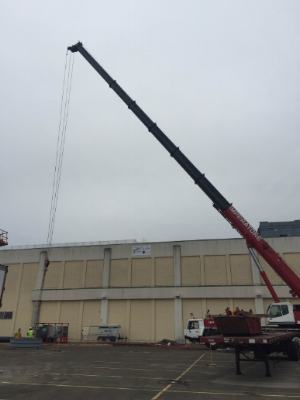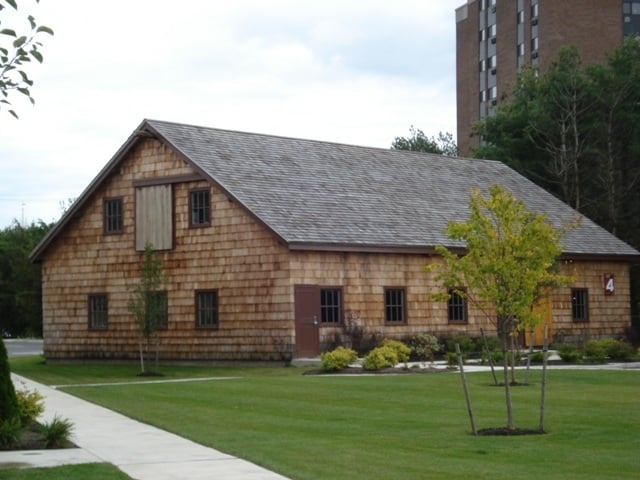New England Construction works with landlords and tenants on a variety of projects ranging from preconstruction to design/build to construction management. Often, these projects require the introduction of large machinery such as cranes, which makes the process bigger in scope.
At NEC, safety is always a top priority, and working with a large crane on site requires the utmost safety — and meticulous planning. In this blog post, we’ll detail how to effectively plan ahead and cover all of your bases so as to ensure safety on the job site with the presence of a crane.
Pre-Planning is Priority
The pre-planning stage is crucial. When planning to bring a crane on site, you need to think of
everything ahead of time to ensure there are no hiccups and avoid dangerous situations for anyone near the project. The following steps will ensure safety on your job site when using a crane:
 1. Sit down with the crane operator and subcontractor; bring all parties to the table who will be playing a role in the process.
1. Sit down with the crane operator and subcontractor; bring all parties to the table who will be playing a role in the process.
2. Present the weight of the item being lifted so that the crane company can tell you what size and weight crane is required.
3. Conduct safety evaluations - The crane operator will give you specifications on the crane, including inspections, the operator’s license, license of riggers, and the PIC plan that illustrates the positioning of the crane and the distance of the boom.
4. Receive charts with the rating (You want to be under 80% of the rated capacity or else it’s considered a critical lift — and that’s why bigger cranes are helpful).
5. Go through safety factors - You should be sent a packet with the Job Hazard Analysis (JHA). Review that information so you’re aware of everything that could possibly go wrong, and mitigate before bringing the crane on site. Identify any additional hazards such as hanging wires around the job site area.
Once this process is complete, you’ll be ready to move on to the crane pickup.
At NEC, we’re familiar with this procedure, so we initiate the paperwork on our projects. For instance, when bringing a crane onto the Rhode Island Mall job site for the removal of the cooling tower, NEC’s General Superintendent, Anthony D’Antuono, conducted the pre-planning. Having brought in large cranes three times before, the NEC team did the first safety run-through and then brought in safety experts as a second set of eyes to ensure the utmost safety.
This level of thoroughness was critical to the process going smoothly. Any hazards were identified and corrected before they could actually occur, and the entire team was trained and kept on the same page.
“Pre-planning is key because it makes for a better and safer site.”
-Anthony D’Antuono, General Superintendent, NEC
Bringing in Safety Experts
Projects that involve cranes are large in scope and require safety experts, whether it’s throughout the entire process or just for a second run-through. We recommend bringing an independent safety firm on site before the crane arrives and to conduct a bystander safety procedure ensuring the set plan is carried out correctively.
NEC has partnered with construction safety firm CRM to ensure safety on all of our projects. After the NEC team does the first runthrough on project details, CRM steps in for the second round to confirm that all hazards have been identified and resolved.
During the Rhode Island Mall project, the CRM team came on site to prep for the arrival of the crane. Then, they went through the same process with the crane operator that NEC had already gone through.
The partnership between NEC and CRM and the level of pre-planning for this portion of the project made it successful.
If you are in the business of development and have a project on the horizon, we welcome the opportunity to speak with you and your team. Request a call today with our Director of Business Development, Kim Sluter, to learn how NEC can assist you with your construction needs.





